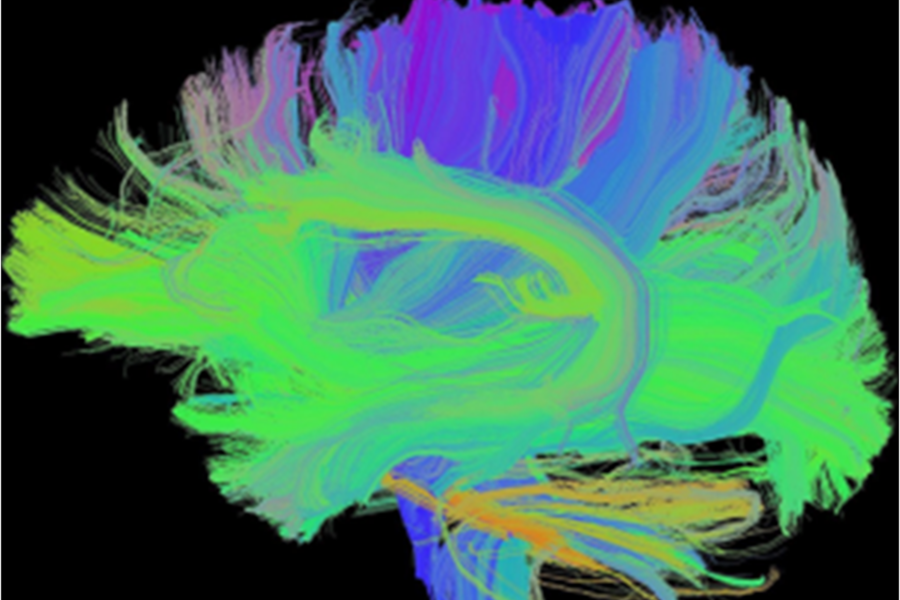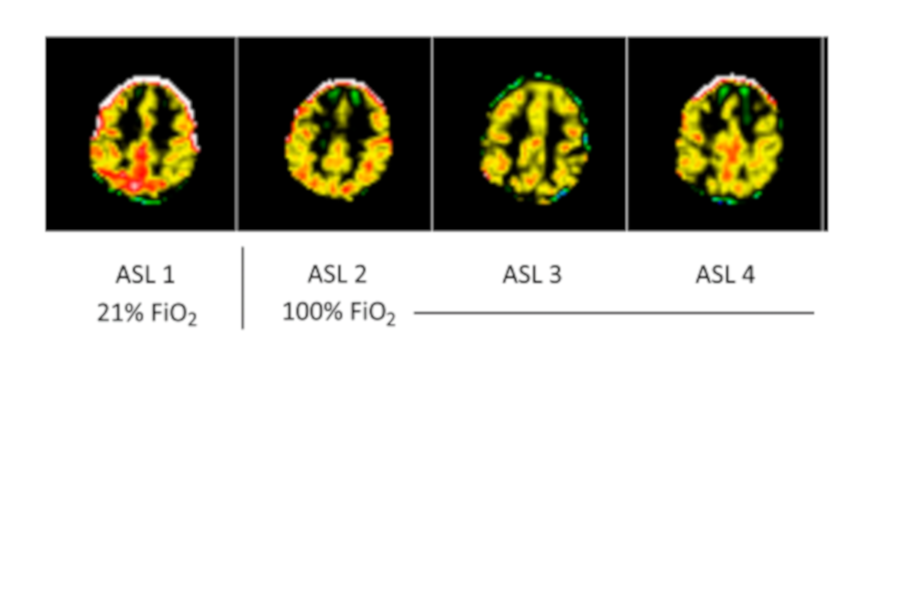Disorientation, dizziness, and fatigue can rapidly occur, unprecipitated, during high-performance aviation. When unnoticed, the outcome can be catastrophic. Our ongoing studies are defining mechanisms that may contribute to the onset of those symptoms. We have recently focused our efforts upon understanding the effects of breathing high concentrations of oxygen, a prerequisite during high-speed and very high altitude aviation, upon overall brain function. Our studies suggest that high levels of inspired oxygen significantly reduce brain perfusion. This is accompanied by electroencephalographic (EEG) signatures of enhanced vigilance. We also found cognitive processes were heightened. Our data may suggest that the brain's "alerting" mechanisms are activated by a drop in perfusion. Our ongoing studies are now determining oxygen dose-response curves and ow the brain responds to rapidly changing levels of inspired oxygen.

These MRI-generated perfusion maps reveal the overall reduction in brain perfusion that occurred while breathing 100% oxygen. The “hot” colors of red and white indicate high levels of perfusion. The “cool” colors of yellow and green indicate low levels of perfusion. The image “ASL1” reveals levels of brain perfusion, in this specific brain section, that existed while breathing room air. ASL images 2-4 reveal the gradual decline in perfusion that occurred following the administration of 100% oxygen.

Our studies in this area have been funded through:
FA8650-17-F-6822, T.O. 052 Hyperoxia: An Unrecognized Mechanism for Inducing “Hypoxia-Like” Symptoms
FA8650-18-S-6001 Defining Hyperoxia-Induced Physiologic Destabilization
NAMRU-D Defining Traits Conferring Enhanced Performance and Resilience in Austere Environments
USN-BUMED Characterizing the Duration of Hyperoxia-Induced Reductions in Brain Perfusion